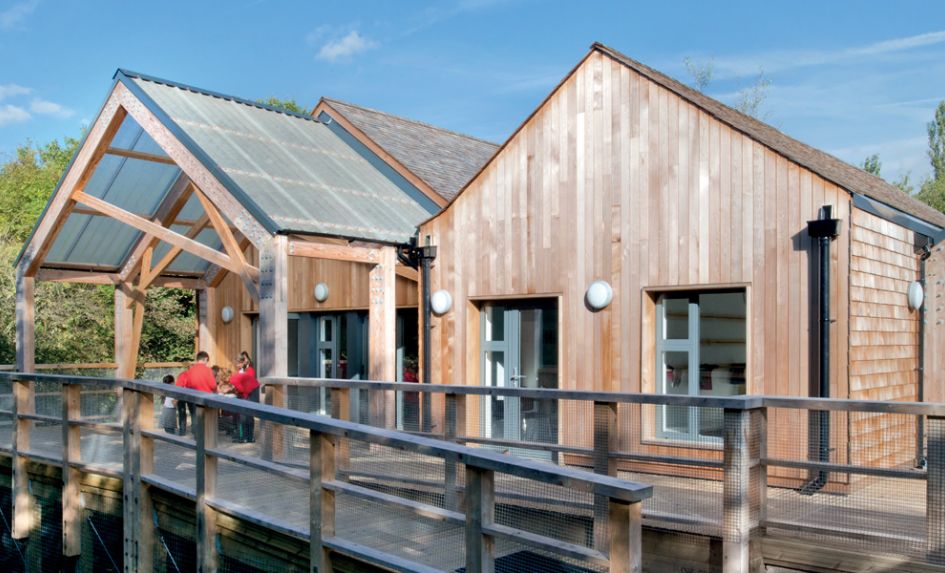Around 2013, Mellor Primary School had a problem. It had been a couple of years since the school had converted to a standalone academy, becoming the first in Stockport to do so. However, while popular, there was a limit to how much it could increase its admission numbers by, in a way that was sustainable for the long-term future.
The only practical solution was to make more room, which is how headteacher Jim Nicholson and his team came to embark on a three-year project to build an extension to the school’s existing 1996-era building.
Contained within this extra space would be a redesigned office area, to meet the administrative demands presented by an increased pupil population, alongside an expansion of the existing hall that could accommodate the larger school population in its entirety and additional toilet facilities.
The extension also needed to host an extra classroom, a school library, a dedicated space for the school’s frequently used out-of-school care provision and rooms that would mean one-to-one support and small group tuition would no longer need to be held in the school’s corridors.
Bringing down the budget
Nicholson and his team went to considerable lengths to keep the costs of the project down as much as possible. “When we went to initial tender, the cost implications were running at £800,000 plus – there was no way we were going to be able to afford that,” he remembers.
The school ultimately managed to secure £546,000 in funding from the DfE, plus an additional £40,000 due to the increase pupil places that the school would be able to offer.
There was one snag, however – other extensions built to a similar brief and specification carried an overall price tag of around £700,000.
“We brought the budget down in several ways,” says Nicholson. “First, we looked for costs that we could cover ourselves. For example, we project managed it all alongside our architect.” Through their combined efforts, the final construction budget came in at £590,000.
The architect in question, Sarah Wigglesworth Architects, helped to devise a particularly novel part of the extension that resulted in one of its most notable features – an exterior Habitat Wall made up of compartments filled with various found and recycled materials sourced by members of the local community.
To tie in with Mellor Primary’s Forest School programme, some of the compartments were set aside for planting and to serve as insect hotels.
Needless to say, the scale of the project and the work involved made for a challenging 2013/14 academic year.“ It was a massive undertaking both for the governors and myself,” Nicholson concedes. “The human impact was quite significant. I had hardly any holiday over the whole year, and there was the knock-on effect it had on staff.”
Changes that staff had to contend with during the construction phase included the temporary loss of 12 parking spaces and a portion of the hall. “In terms of our teaching, the children were very adaptable, considering they’d been put into a different learning space” Nicholson adds, “but we knew that this was going to be a short-term measure for a long-term gain. We just had to adapt.”
A peaceful space
So how does the end result compare with the initial brief?
“There were very few significant differences in the overall concept,” says Nicholson.
“One thing we couldn’t afford to do was put glass on a canopied area outside the classroom, so polycarbonate was used instead. Some of the exterior fixtures and fittings ended up being plastic rather than aluminium, and we had to compromise slightly on the window frames, but we still had some very good windows put in. Spending time on sourcing suitable materials at an affordable price was something that our team did very effectively.”
In terms of the extension’s impact on the pupils, perhaps the largest is that it’s enabled Mellor Primary to shift from having mixed age classes to single form entry. The school’s curricular and support possibilities have also broadened, thanks to the increased room.
As Nicholson notes, “Across the school we now have spaces for teaching music, small one-to-one interactions, counselling sessions and meetings with parents. The Y6 children have now got a beautiful learning space, which is incredibly calm. It’s a very peaceful space to learn in. Our outcomes for children across the board this year were all above national for outcomes and progress. The children have a quality environment that’s not just a breezeblock building.”










